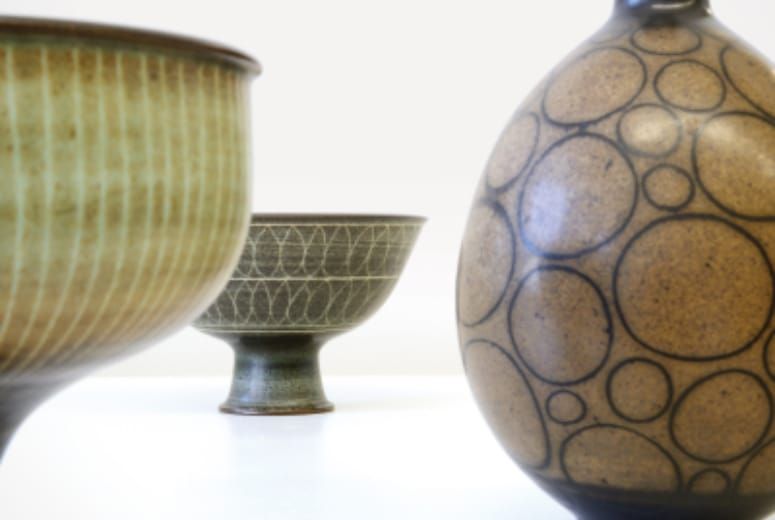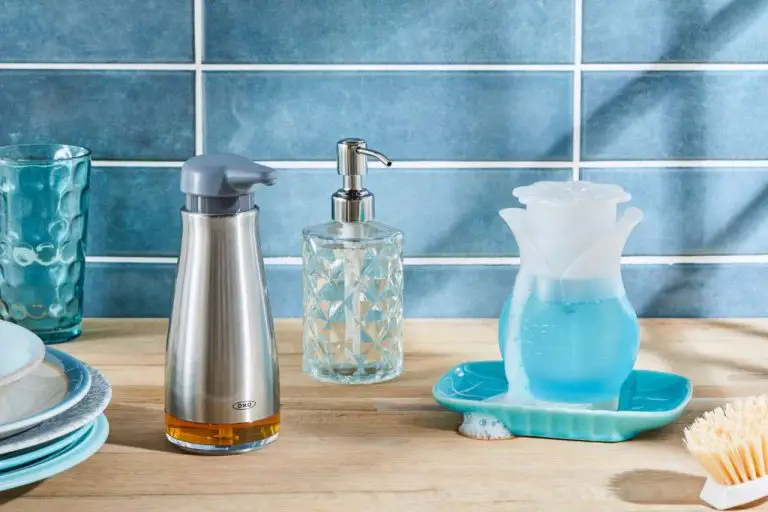What Are The California Pottery Brands?
California has a rich history of pottery production dating back to the early Native American tribes and Spanish missionaries in the 18th and 19th centuries. The clay-rich landscape of California provided an ideal environment for pottery, with each region developing its own unique styles and techniques. From the Spanish-influenced pottery of the missions to the Arts and Crafts movement in the early 20th century, California potters have created a diverse array of pottery from functional ware to decorative art pieces.
Major pottery hubs emerged across California, particularly in areas like the Central Coast, Bay Area and Southern California. The temperate climate allowed for year-round production. Local clays, aesthetic tastes and cultural influences gave rise to distinctive pottery styles, glazes and decorative motifs. Through the 20th century, renowned California pottery brands were established and new waves of potters continued reinventing the craft. California remains a thriving center for ceramic arts today with numerous potters, studios and collectors across the state.
Early California Potters
Some of the earliest and most influential California potters emerged in the early 20th century. Many took inspiration from the natural landscape and ceramics traditions of Asia. Key figures include:
Laura Andreson (1902-1999) – Andreson studied chemistry and art in Los Angeles before opening a pottery studio in Hollywood in the 1920s. She became known for crystalline glazes and Chinese-inspired designs. Her work is in major museums like the Smithsonian. [1]
Beatrice Wood (1893-1998) – Wood moved to Ojai, California in 1947 and produced colorful, free-form pottery inspired by ancient Chinese ceramics and local materials. She pioneered an unconventional lace-like aesthetic. [2]
Marguerite Wildenhain (1896-1985) – A Bauhaus-trained potter, Wildenhain moved to California in 1940 and founded Pond Farm in Guerneville. She emphasized functional stoneware forms and natural ash glazes. Her pottery school influenced many West Coast ceramic artists.
Other important figures were Otto and Vivika Heino, Otto Natzler, and Gertrud Natzler who specialized in a mix of Asian-inspired glazes and modernist shapes.
These early potters drew on California’s rich clays, unique landscape, and openness to new approaches to create a distinctive regional style.
[1] http://collections.artsmia.org/art/59768/apple-green-lava-glazed-footed-bowl-beatrice-wood
[2] https://www.oldecrackerfactory.com/antiques/
Arts & Crafts Movement
The Arts & Crafts movement, which originated in England in the late 19th century, had a major influence on California pottery. The movement emphasized handmade craftsmanship and simple forms inspired by nature. These ideals aligned with the early California pottery studios started by pioneering ceramic artists like Albert Solon and William Valentiner [1].
Many California potteries embraced the Arts & Crafts aesthetics in their designs. For example, California Faience in Berkeley created tile murals featuring floral and nature motifs, reflecting the movement’s appreciation for nature [2]. The emphasis on handcrafted techniques also continued in later California pottery styles like Mid-Century modern. Overall, the Arts & Crafts philosophy left a lasting impact on California ceramic art.
Established Brands
Some of the most well-known and collectible California pottery companies were established in the early 20th century. Brands like Bauer, Heath, and Metlox produced beautiful ceramic pieces that are still cherished by collectors today.
Bauer Pottery, founded in 1882 in Los Angeles, was one of the first commercial pottery studios in California. Under the leadership of designer Florence Ware, Bauer created art pottery with colorful glazes in the 1920s. Many of their vases and plaques feature stylized floral motifs.
Heath Ceramics, founded in 1948 by Edith Heath, is one of the most recognized names in California pottery. Based in the San Francisco Bay Area, Heath pioneered innovative ceramic glazes and production methods. Their mid-century modern designs in earthy colors and textures are iconic. Heath Ceramics still produces tableware and home goods today.
Metlox Manufacturing Company produced colorful Pop Art-inspired pottery in the 1960s and 70s under the Poppy Trail and Campanile lines. Hand-painted Poppy Trail dinnerware featured California poppies and landscapes. Metlox’s headquarters was located in Manhattan Beach in Southern California.
Mid-Century California Pottery
Mid-century modern style emerged in California pottery during the 1950s-1960s. California was a hotbed of innovation and new styles during this era. Many ceramic artists moved to the area looking for new inspiration and California’s casual lifestyle and climate inspired more organic, free-flowing shapes and earthy glazes.1

Mid-century California pottery emphasized simple, clean lines and natural shapes reminiscent of the landscape. Textures were also important, with surfaces ranging from smooth to heavily textured. Bold, graphic patterns and colors were popular. Some of the most recognized mid-century California pottery came from companies like Heath Ceramics, Metlox/California Clemins, and Bauer Pottery.2
Many innovative ceramic artists got their start in California during this period, helping shape the organic modern aesthetic through their studio works. The warmer climate and casual way of living differentiated West Coast pottery from the colder climates and formalism of the East Coast. California pottery captured the free spirit and laidback attitudes of mid-century California.
Contemporary California Potters
California has a thriving community of contemporary ceramic artists carrying on the state’s rich pottery tradition. Some notable contemporary California ceramic artists include:
Peter Shire is known for his funky, post-modern designs. He was part of the Memphis design movement in the 1980s. His colorful, ironic ceramics combine geometric shapes and whimsical motifs.[1]
Richard Shaw is acclaimed for his highly realistic trompe l’oeil porcelain sculptures that resemble everyday objects like paper bags and candy wrappers. He often incorporates social commentary into his work.[1]
Viola Frey is known for her larger-than-life ceramic sculptures of figural motifs. Her work explores issues of identity, stereotypes, and the human condition.[1]
Adrian Arleo creates delicate porcelain vessels with intricate pierced and inlaid designs. Her works blend functional pottery with sculpture.[1]
Other notable contemporary California ceramic artists include Susan Peterson, Sunkoo Yuh, Chris Gustin, Ron Nagle, and Ralph Bacerra.[1]
Collecting California Pottery
Collecting vintage California pottery has become increasingly popular among antique collectors and decorators. California was home to numerous influential ceramic studios and art potteries throughout the 20th century. Identifying makers marks and understanding the history of different studios can help collectors spot valuable pieces.
Some tips for identifying and collecting California pottery:
- Look for hallmarks like “Made in California” or the state outline imprint.
- Familiarize yourself with marks from top studios like Bauer, Heath, Pacific Clay, McCoy, Metlox, and Vernon Kilns.
- Mid-century modern and California funk styles are in high demand.
- Figurines, planters, vases, and dishware are common.
- Items may feature bright glazes, saturated colors, or intricate patterns.
- Condition greatly impacts value – small chips or cracks can dramatically lower prices.
- Rarity plays a key role as well – unusual shapes, colors, or production techniques make pieces more desirable.
- Research auction results and collector books like Collector’s Encyclopedia of California Pottery to learn values.
Focusing one’s collection on a particular studio, time period, or style can be rewarding. Excellent examples of California pottery display innovative designs, high production standards, and strong artistic vision.
Notable Design Styles
California pottery is known for its distinctive and innovative design styles that were influenced by the state’s unique culture and artistic movements. One of the most iconic styles is California Funk ceramics.
California Funk emerged in the 1950s-60s, characterized by playful, irreverent, and whimsical ceramics that rejected minimalist traditions. Funk artists drew inspiration from pop culture, humor, satire, and the counterculture of the era. Their work featured bright colors, bold patterns, cartoonish or abstract shapes, and imaginative decoration.
Key California Funk ceramicists included Robert Arneson, David Gilhooly, and Peter Voulkos. They pushed the boundaries of conventional pottery and developed new glazing and firing methods to achieve innovative effects. Distorted cartoon faces, eccentric animal sculptures, and anthropomorphic pots exemplified the Funk style.
Other notable California ceramic styles included Bay Area Figurative ceramics which blended abstract and figurative forms, and California Impressionism with its nature-inspired glazes. From cutting-edge contemporary to revivalist studio pottery, California ceramics showcased both the creativity and diversity of the state.
Geographic Influences
The diversity of California’s landscape had a major influence on the aesthetic of its pottery. Potters across the state drew inspiration from the natural clay deposits, environments, and cultures unique to their region.
In Northern California, potters near the Sierra Nevada mountains often used local red and brown clays which produced earthy, organic pottery. Glazes were inspired by the forest environment, with colors evoking pine needles, tree bark, and autumn leaves. Designs featured natural shapes like pinecones, ferns, and wood grain 1.
In Southern California, potters were inspired by the desert landscape. They created mix-glazed pottery with colors like terracotta, sand, blue sky and sunset. Textures and shapes mimicked cacti, Joshua trees, and eroded rock formations 2. Spanish and Mexican cultural influences were also evident in the pottery.
Coastal pottery featured cool tones in blues, greens and grays reminiscent of the ocean. Smooth glazes and fluid, asymmetrical shapes reflected the ebb and flow of waves. Sea life like shells, seaweed and fish were common motifs.
California’s diverse landscapes provided an abundance of inspiration that potters translated into the colors, textures, shapes and designs of their work.
Conclusion
In summary, California pottery has a rich history and tradition spanning over 100 years. From the early potters of the late 1800s to the contemporary artists of today, California has been home to some of the most influential ceramic artists and pottery companies in the country. Key developments include the establishment of influential brands like Bauer and Heath Ceramics during the Arts & Crafts movement, the proliferation of innovative Mid-Century modern California pottery, and the continued tradition being upheld by modern ceramic artists today.
Some of the notable styles that originated or flourished in California include high-glaze finishes, bold colors and patterns, sleek modernist shapes, intricate slip trailing, and unique local influences like ocean themes or desert landscapes. California pottery reflects the culture and creativity of the region over the decades. For collectors or art appreciators, California pottery offers a diverse range of aesthetics, from rustic antique jugs to sleek decorative vessels. Understanding the history and regional styles helps provide context for this important genre of American ceramic art.



